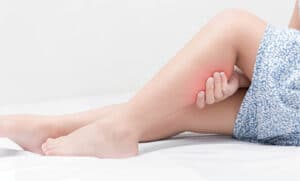By Julian J. Javier, MD, FSCAI, FACC, FACP and Leandro Perez, MD, FACC, FSCAI, RPVI


PAD (Peripheral Arterial Disease)
Individuals with peripheral arterial disease (PAD) have blood flow disruptions in their arteries, and it most often affects the legs, but it can also occur in the brain, arms, and heart. When the blood vessels are narrowed or damaged, the blood flow becomes obstructed, and other complications can coincide. PAD can lead to severe medical conditions.
PVD (Peripheral Venous Disease)
The symptoms of Peripheral Venous Disease are very similar to PAD. PVD is also a blood flow problem but within the blood vessels and veins. PVD usually stems from a narrowing of the blood vessels that carry blood to the legs and arms. Atherosclerosis (plaque buildup) is the primary cause of PVD; however, other contributing factors are injury, abnormal anatomy, and infections, to name a few.
PVD is linked to several other conditions such as Buerger disease, Venous Insufficiency, Venous Thrombosis, Deep Vein Thrombosis, Pulmonary Embolisms, Raynauds, Thrombophlebitis, and varicose veins.
PAD and PVD Have a Lot in Common
If the cause of the disorder is due to atherosclerosis, individuals will often have a comorbidity of both PAD and PVD, as well as other blood vessel conditions like DVT’s (Deep Vein Thrombosis), varicose veins, pulmonary embolisms, and venous insufficiency, as they are interrelated.
Preventing atherosclerosis can be achieved through medications, as well. However, if the blockages are severe and life-threatening, a medical procedure will be necessary to repair the artery or vessel to allow blood to flow normally again.
PAD and PVD Complications
• Stroke
• Heart attack
• Amputation
• Poor wound healing
• Pain upon standing or walking dication (leg and calf pain while walking)
• Weak pulse on ankle or foot
• Hair loss on legs and feet
• Leg pain while standing or sitting, which subsidesafter resting for an
• extended period of time
• A sensation of tightness & burning may occur in the leg or foot
• Swelling of the legs, which dissipates after elevation
• Dark veins
• Dry, itchy skin
• Ulcers can occur near the ankle and are often painless, but may have a dark rim
• Shortness of breath
Although arterial and venous insufficiency can happen to anyone, the most common factors that put you at risk are family history, smoking, being overweight, and a sedentary lifestyle.
PAD and PVD Complications
• Stroke
• Heart attack
• Amputation
• Poor wound healing
• Pain upon standing or walking
Conservative Treatment with Lifestyle Changes
Very often, PAD and PVD are targeted with several lifestyle changes and an exercise regimen. However, if you currently smoke or use tobacco, then you should cease and consider smoking cessation counseling. This will also help any co-morbid diseases, such has Coronary Heart Disease, Hypertension, Hypercholesterolemia, etc.
More than this, making the right food choices and walking or other forms of cardiovascular exercise will go a long way in controlling PAD and PVD. Taking an aspirin or other anti-platelet medications will also ease any ongoing symptoms of PAD and help prevent any complications from arising.
Treating PAD and PVD
Treatment for PAD and PVD traditionally consists of reducing and preventing symptoms. This approach is usually taken in a bevy of different ways. There are several levels of treatments. First, come lifestyle changes. If necessary, your doctor may also prescribe high cholesterol or blood pressure medications. And, should your condition continue to progress, there are several non-invasive procedures that can alleviate symptoms as well.
Julian Javier, MD | Leandro Perez, MD
Dr. Julian J Javier and Dr. Leandro Perez are Cardiac and Vascular specialists with a special emphasis on limb preservation and venous disorder. Dr. Javier and Dr. Perez are board certified in cardiovascular disease and are well known nationally and internationally, authors of multiple articles in prestige peer review journals and book chapters on venous and arterial disease. They are affiliated with Physicians Regional Medical Center and Collier Regional and are accepting new patients.
To Schedule your appointment with Dr. Javier or Dr. Perez, please call (239) 300-0586.
Naples Cardiac and Endovascular Center
www.heartvein.com
1168 Goodlette-Frank Rd N Naples, FL 34102
(239) 300-0586
 Southwest Florida's Health and Wellness Magazine Health and Wellness Articles
Southwest Florida's Health and Wellness Magazine Health and Wellness Articles
